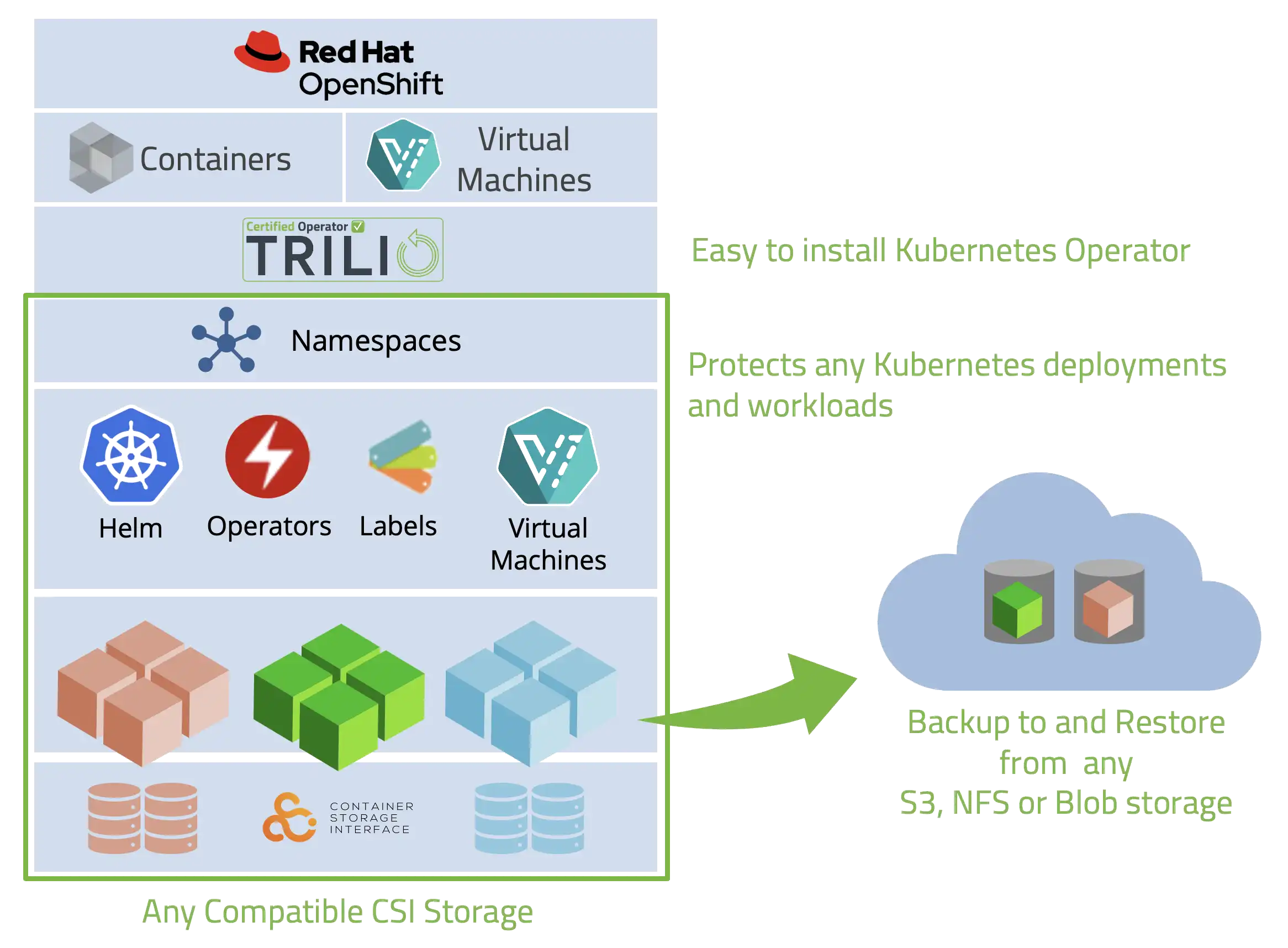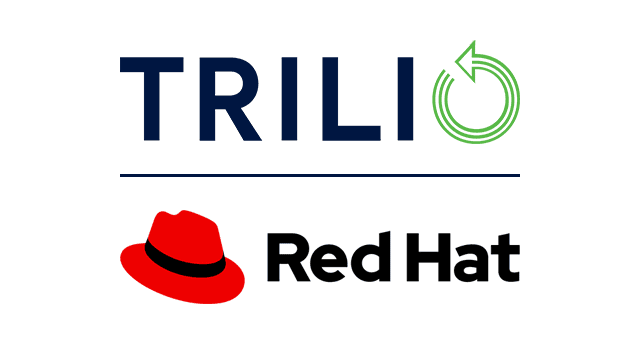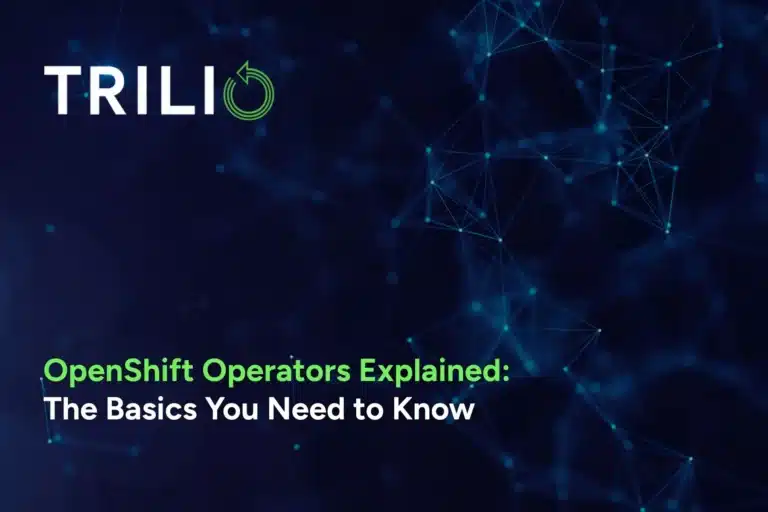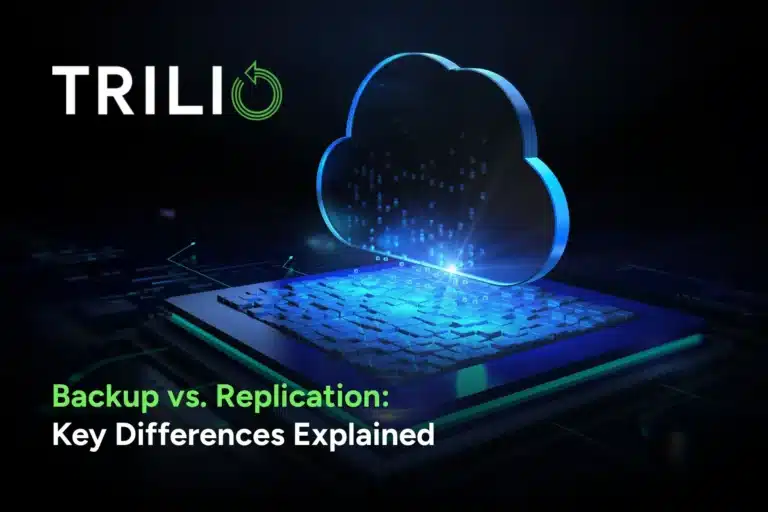Through Trilio’s hands on experience I want to provide you with a better understanding of: Why people pick Trilio to solve Data Protection and Recovery of Virtual Machines in Red Hat OpenShift Platform environments?
As I wrote in previous blog post, we have seen and incredible evolution in virtualization over the last 10 yrs (if you missed it please read “The Evolution of Virtualization Management: From LibVirt to KubeVirt”). Time and time again I see industry leaders like Red Hat drive innovation, that not only is adopted by the open source community but then is packaged in a way that enables organizations to adopt these technologies and embark on their open source journey’s. One of these revolutionary products is Red Hat OpenShift-Virtualization. As OpenShift-Virtualization is adopted, customers require data protection for the management of these stateful environments. Trilio for Red Hat OpenShift Virtualization excels as the best-in-class solution for seamless integration, automation, and top-tier data protection. Trilio for OpenShift Virtualization is the premier choice for businesses handling virtual machines in the Red Hat Ecosystem.
And, when I speak to our customers and prospects about why they’ve deployed or are considering our solution, these are the five key reasons. Please continue to read this post for a deeper dive or explanation to each of the following key Trilio characteristics or capabilities:
Purpose Built for Red Hat
Automation
Intelligent Recovery
Monitoring & Control
Futureproof

Above and beyond these points, Trilio’s technology for Red Hat delivers a slew of additional benefits that bring meaningful value for our customers and the market:
100% Self-Service
Storage Agnostic
Linear Autoscale
DevOps Friendly
Continuous Restore
1 Purpose Built for Red Hat OpenShift Virtualization
Trilio for OpenShift is a 100% Cloud Native solution.
Deployed as an Operator.
Upon installation, Trilio for OpenShift is included in the OpenShift Console as a backup option for workloads and VMs. This allows for an integrated experience with simplified workflows.
2 Automation
Ansible Certified Content for orchestrating backup, recovery and migration steps.
Protect applications and data using event driven or policy-based frameworks through integration with Red Hat Advanced Cluster Management (RHACM).
3 Disaster Recovery and Ransomware Protection
Use Trilio to build intelligent hybrid or multi-cloud disaster recovery strategies, and quickly recover to the same cluster or any cluster, same namespace or any namespace, whether on-prem or off-prem.
With capabilities such as Bring Your Own Key Encryption Management and Immutable Backup structures, Trilio ensures that critical data is safeguarded and recoverable against malicious attacks.
4 Monitoring & Control
Master Seamless Application Mobility: Move applications across cloud, on-premise, and edge Kubernetes environments.
Execute Precision Workload Migrations: Transfer workloads within clusters or between sites with unwavering Kubernetes awareness.
Zero-Disruption Application Relocation: Shift applications, across environments.
Backup Dominance: Safeguard applications across any environment.
Monitor, Scale, Conquer: Deliver real-time monitoring of backups and manage to limitless storage.
5 Futureproof
Trilio is built to evolve with your Red Hat OpenShift Virtualization environment. Flexibility with hooks ensures application consistency and the ability to orchestrate workflows before and after data protection operations. Combined with Trilio’s linear scale, Trilio for OpenShift Virtualization provides the performance required by organizations.
Trilio backup images are stored in an industry-standard VM image format called QEMU Copy on Write (QCOW2), so the images are not locked into proprietary formats. Many open-source tools are available to manage and manipulate QCOW2 images in any cloud.
Also, in a recent survey we did across customers and prospects the following emerged as the “Top 5 Use Cases”. If you are reading this post I bet one of these items are important to you.
Disaster Recovery
Ransomware Protection
Backup
Replication / QA & Testing
Tenant / Self-Service
Bottomline
By joining forces Trilio and Red Hat bring together cutting-edge technology with expert consulting, empowering Trilio for OpenShift and OpenShift-Virtualization customers to effortlessly scale their virtual machine management and fulfill stringent data protection requirements . And when customers deploy Trilio’s software we act as single point of contact for our solution and Red Hat will be involved as required.




